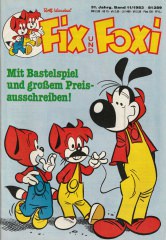Products description
"Many many years ago... as befits a proper fairy tale, Peter Rühmkorf's story of realization begins in a castle ruin that is over a thousand years old. We are introduced to the castle's caretaker Jam McDamn and his cat Minnie, who goes by the name of Ginger because of her ginger-red fur, as the permanent inhabitants of this unusual place.
However, the castellan is not only a foolish cat lover, but also a wondrous ghost seer, and the more ghost stories he concocts, the deeper he falls under the spell of the ghost of Kenilworth, who awaits his resurrection in the lowest vaults.
In the end, all it takes is one particularly dark midnight and one wrong word in this great place to make the miracle come true and the magic real. The castellan is transformed into a tomcat, the cat is changed into an amber-haired girl, and both newborn beings are transported to two different corners of the world: one to Italy, the other to India. "Goodbye is a resurrection in Kenilworth" are the last words they remember of their old existence, and they accompany the tale of finding a home like a secret melody.
How the two dissimilar creatures find their way in their new world and the convoluted paths they take to get back together in the end must, of course, remain a secret of our fairy tale. And whether the fairytale cat or the cat girl might not gradually get used to their new roles and whether it might not be difficult to find their way back to themselves from time to time. Seen in this light, spectacular events and the most fantastic entanglements could ultimately lead to completely different confusions: mysterious mental realms where wishes and curses have a common magical root."
Condition 0 (mint MT)
An exceptional example of a given book. Bindery or printing defects are allowed. Cover is flat with no surface wear. Inks are bright with high reflectivity. Corners are cut square and sharp. Spine is tight and flat. Paper is white, supple and fresh. No interior autographs or owner signatures.
Condition 0-1 (near mint NM)
Nearly perfect in every way with only minor imperfections that keep it from the next higher grade. Only subtle bindery or printing defects are allowed. Cover is flat with no surface wear. Inks are bright with high reflectivity and minimal fading. Corners are cut square and sharp. Small, inconspicuous, lightly penciled, stamped or inked arrival dates are acceptable as long as they are in an unobtrusive location. Spine is tight and flat. Paper is white, supple and fresh. Only the slightest interior tears are allowed.
Condition 1 (very fine VF)
An above-average copy that shows minor wear but is still relatively flat and clean with outstanding eye appeal. A small accumulation of minor bindery/printing defects is allowed. Minor cover wear beginning to show, possibly including minor creases. Corners may be blunted. Stamped or inked arrival dates may be present. Minor foxing. Paper is cream to tan. Centerfold is mostly secure. Minor interior tears at the margin may be present.
Condition 1-2 (fine FN)
An above-average copy that shows minor wear but is still relatively flat and clean with no significant creasing or other serious defects. Some accumulation of minor bindery/printing defects is allowed. Minor cover wear apparent, with minor to moderate creases. Inks show a significant reduction in reflectivity. Blunted corners are more common, as is minor staining, soiling, discoloration, and/or foxing. Stamped or inked arrival dates may be present. Paper is tan to brown and fairly supple with no signs of brittleness. Minor interior tears at the margin may be present. Centerfold may be loose.
Condition 2 (very good/fine VG-FN)
An above-average but well used book. An accumulation of bindery/printing defects is allowed. Minor to moderate cover wear apparent, with minor to moderate creases and/or dimples. Inks have moderate to low reflectivity. Blunted corners are increasingly common, as is minor to moderate staining, discoloration, and/or foxing. Stamped or inked arrival dates may be present. Paper is tan to brown with no signs of brittleness. Centerfold may be loose. Minor interior tears may also be present.
Condition 2-3 (very good VG)
The average used book. Cover shows moderate to significant wear, and may be loose but not completely detached. Cover reflectivity is low. Can have moderate creases or dimples. Corners may be blunted. Store stamps, name stamps, arrival dates, initials, etc. have no effect on this grade. Some discoloration, fading, foxing, and even minor soiling is allowed. As much as a 1/4" triangle can be missing out of the corner or edge; a missing 1/8" square is also acceptable. Moderate spine roll may be present and/or a 1" spine split. Paper is brown but not brittle. Minor to moderate interior tears may be present. Centerfold may be loose or detached at one staple.
Condition 3 (good GD)
Cover shows significant wear and may even be detached. Cover reflectivity is low and in some cases completely absent. Book-length creases and dimples may be present. Rounded corners are more common. Moderate soiling, staining, discoloration and foxing may be present. The largest piece allowed missing from the front or back cover is usually a 1/2" triangle or a 1/4" square. Tape and other forms of amateur repair are common in older books. Spine roll is likely. May have up to a 2" spine split. Paper is brown but not brittle. Centerfold may be loose or detached. Moderate interior tears may be present.
modified eCommerce Shopsoftware © 2009-2025



 Contact
Contact





